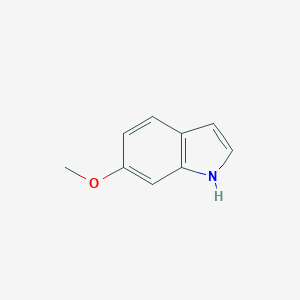The ideas and methods of the study of chinese medicine compound ingerifying substances
-
Last Update: 2020-07-05
-
Source: Internet
-
Author: User
Search more information of high quality chemicals, good prices and reliable suppliers, visit
www.echemi.com
, the basic idea of basic research on the compound effect substances of Traditional Chinese medicine
Chinese medicine compound is a complex system, the material basis of efficacy, should be a broad chemical composition, including inorganic,small molecule organic compounds(
such as volatile oil,alkaloid,flavonoid,saponins, etc.) and biomolecular(
such as peptide,protein, glycopeptides, polysaccharides, etc.) three categories Traditional Chinese medicine compound relies on these chemical components , play a major multi-target, organic overall collaborative therapeutic effect To carry out the research of the correlation between the material foundation and efficacy and mechanism of chinese medicine, should adopt a set of research systems such as "one combination, two basic lectures, three chemical levels, four pharmacological levels" and the introduction of advanced technology in modern science, molecular biology, information and other disciplines to solve the corresponding methodology "One combination" is the combination of pharmacological research and chemical research, "two basic clear": to clarify the chemical composition of Chinese medicine compound , basically clear the efficacy and mechanism of Chinese medicine compound; Therefore, , the research of compound chemical should be
combined with the combination of chemistry-pharmacology-
the theory of Chinese medicine as a necessary way to clarify the basis of pharmaceutical effect substances, to find the active composition group of Chinese medicine is the basis of the pharmaceutical effect substance as the main task, with molecular biology technology as the guide, with the help of computer-aided means, to reveal the relationship between chemistry, pharmacology and clinical complex multi-dimensional information and quantitative group effect Second, the basic method of basic research of Chinese medicine compound effect substances
1 The liquid chromatography-mass spectrometry is mainly, and a variety of high-efficiency chromatography combined with comprehensive analysis of chinese medicine compound chemical components The compound of traditional Chinese medicine contains polysaccharides, proteins, organic acids, alkaloids, saponins, flavonoids, volatile oils and other polar compounds, which need to use the theory and method of chromatography analysis, including the best column system recommendation, optimization of operating conditions, analysis and quantification of overlapping peaks to solve the separation problems of complex systems Can be taken to liquid chromatography - ultraviolet - mass spectrometry as the mainstream, supplemented by gas chromatography, capillary electrophoresis of various separation patterns and combined technology, using gas chromatography analysis volatile oil composition, capillary electrophoresis analysis of biological macromolecules; Liquid chromatography analysis of medium polarity and non-polar components, some of the more polar acid, alkali son sesame in the flow phase to add additives, or with ion-to-chromatography, to form a set of comprehensive analysis of the technology and methods, and for the separation of sites, components to establish a basis for the separation and purification The latest three-stage quadrial mass spectrometer has high sensitivity, achieves soft ionization at atmospheric pressure, produces a proposed molecular ion peak, and selects ion detection technology, which greatly enhances the qualitative and quantitative ability of unknown compounds 2
Preparation of liquid chromatography, separation of active substances, to meet the structural determination, activity, toxicology experiments and even treatment and other large-scale applicationrequirements The preparation liquid chromatography has been widely used in life science because of its high degree of separation, rapid, flexible, and able to prepare a certain quantity, so as a compound study, it is undoubtedly the preferred method for the preparation of the components of its pharmaceutical effect substances It can be enlarged to the preparation chromatography after optimization of operation conditions on the analytical liquid chromatography, the flow rate, the upper sample amount and the gradient elution conditions, the cutting components according to the retention time (i.e the interaction between the compound and the flow phase and the fixed phase molecules), the continuous solid mixture obtained by the refrigeration-drying technology is provided to the pharmacological experiment for screening, and the feedback information of the pharmacological experiment continues to separate the active site and components, and the optimization of the components 3 Establish a multi-channel, multi-target integration and regulation of biological mechanism research platform, as a chinese medicine compound active substance screening target Experimental pharmacological research has evolved from the previous main level of drug efficacy evaluation to the overall, cell and molecular level of the combination of research model Active molecules such as hormones, neurotransmitters, cytokines and receptors and even gene expression have been used as targets in the study of Chinese medicine pharmacology, and have accumulated a wealth of experience and information for the in-depth study of Chinese medicine compound pharmacology Active screening can be performed on animals, organs, cells and genes, using different Chinese medicine compounds (including monophilic drugs) Initial results have been achieved in this area (
/
Zhao Guoping, School of Medicine, Jinan University of
Medicine, Qian Sanqi, /
He Qinghu, University of Traditional Chinese Medicine, Hunan )
This article is an English version of an article which is originally in the Chinese language on echemi.com and is provided for information purposes only.
This website makes no representation or warranty of any kind, either expressed or implied, as to the accuracy, completeness ownership or reliability of
the article or any translations thereof. If you have any concerns or complaints relating to the article, please send an email, providing a detailed
description of the concern or complaint, to
service@echemi.com. A staff member will contact you within 5 working days. Once verified, infringing content
will be removed immediately.







